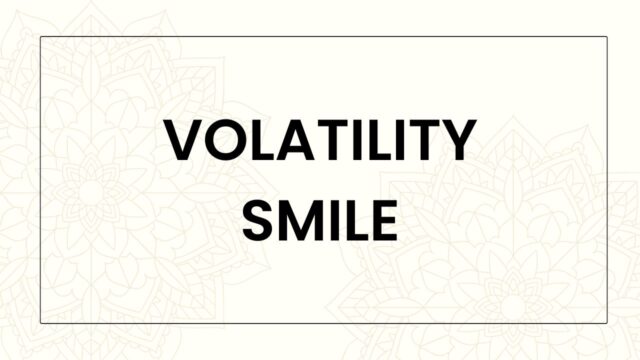
The Volatility Smile and Its Importance to Options Traders
The term “volatility smile” has been used to describe the behavior of financial options. Volatility smiles are a parameter in the Black-Scholes formula that must be adjusted to match market prices. This article will discuss the definition of the volatility smile and its importance to options traders. This article explains why volatility smiles are so important and how to recognize them. Ultimately, a volatility smile will help you predict stock and index prices.
Evidence for a volatility smile
One of the most intriguing phenomena in financial markets is what’s known as the “volatility smile.” The term suggests that the implied volatility of a security is left-skewed, meaning that the probability of a large down or up movement is higher than its likelihood of a large up or down movement. Traders, who perceive this phenomenon as a warning sign of potential risk, respond by increasing their leverage, which increases volatility of the underlying asset.
In order to test this hypothesis, researchers have used an alternative model of the volatility smile to compute implied volatility, a key component of the Black-Scholes option pricing model. This model, which relies on non-lognormal distributional assumptions, produces a skew pattern and systematic pricing bias for options, which should be neutral for all maturity-moneyness of underlying assets. For volatility to be pronounced, a market’s volatility must have a smile-like characteristic.
Types of smiles
When trading, a trader should be aware of the various types of smiles associated with volatility. The volatility smile is a common indicator of a market’s implied volatility. Equity markets often show a small tilted smile near money, which appears as a kink on a general downward-sloping implied volatility graph. This type of smile is sometimes called a smirk.
The implied volatility smile is a common graph shape and can be easily interpreted by following the price movement of an underlying asset. Volatility smiles can be either at the money or out-of-the-money. The smile is most likely to follow the volatility of a single option as it moves. While implied volatility is an important factor in option pricing, traders must take into account other factors that can affect the price of an option.
In options trading, the volatility smile occurs when the strike price of an option moves further away from the current market price. Options with higher volatility are generally more expensive than options with lower strikes. However, a higher volatility smile occurs when the strike price of an option moves away from the current market price. The volatility smile can be triggered by a variety of external factors. One of the most prominent is a stock market crash.
Variability of smile curves
There are several explanations for the variabilities in smile curves, including their relationship to the success of a product, the concept that made the product successful, and the marketing and research strategies that influenced its success. The smile curve theory demonstrates that the more successful the product is, the higher its value added in the manufacturing and service sectors. As a result, countries with higher slopes of the smile curve will typically have more highly paid professionals. Furthermore, the GDP of nations with higher smile curves will tend to increase, resulting in a widening of the gap between countries.
The variability of smile curves was studied by evaluating the reproducibility of facial expressions in a sample of thirty young adults. Participants were asked to place landmarks on their faces prior to taking the images. The results revealed an average difference of 1 mm between two consecutive smiles, indicating significant error in landmark placement. These results suggest the need for further research to understand the precise mechanisms that underlie smile curve variability. However, it is important to remember that smile curves are not the only way of describing a person’s appearance.
Importance of volatility smiles for options traders
Volatility smiles are indicators of the relative strength of options. They show whether a particular segment of the market is more or less volatile than the overall market. While volatility can be affected by various factors, the smile is one indicator that you cannot ignore when making trading decisions. Let’s take a closer look at how volatility smiles work for options. Let’s begin by examining the different types of volatility smiles and the impact they can have on an investor’s trading decisions.
The volatility smile is a pattern that reflects the pricing of an option. Volatility smiles were first observed after the 1987 stock market crash. The value of an option is determined by a number of factors, including the strike price and the expected volatility of the underlying asset. The Black Scholes model includes Implied Volatility, which is the correlation between the strike price and the volatility. In other words, a volatility smile reflects the way options are priced.


































